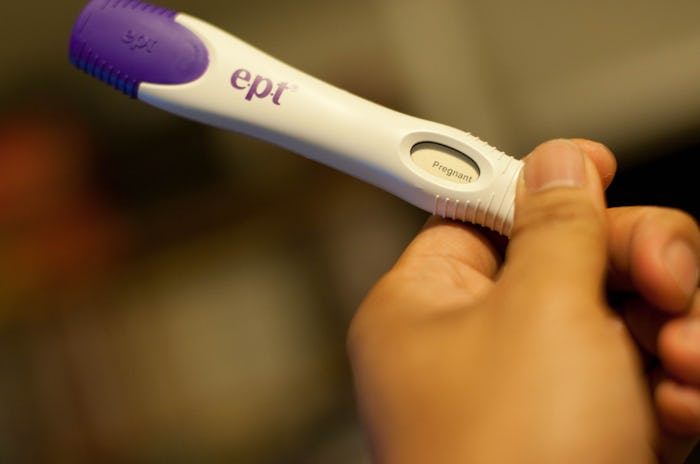Life
Can A Pregnancy Test Be Wrong? 5 Ways To Ensure An Accurate Read
It doesn’t matter if you’ve been trying to conceive or avoiding it altogether, taking a pregnancy test is a heart-hammering, nerve-wracking experience.If you’re anxious for a baby and get a negative test result, you may find yourself shaking the stick like a Polaroid trying to will another line to appear. Or if you’re praying that your birth control hasn’t failed you and get a positive result, you may be desperate to make that line disappear. But is it possible? Can a pregnancy test be wrong?
Technically, no. According to U.S. Department of Health and Human Services’ Office of Women’s Health, home pregnancy tests are almost 99 percent accurate. Mainly because of how they work. As Mayo Clinic explained, home pregnancy tests detect human chorionic gonadotropin (hCG) , a hormone that is produced once a fertilized egg implants in your uterus. Pretty straightforward, right? But just because the test detects hCG doesn’t necessarily mean there’s a bun in the oven. There are a few circumstances that could result in an inaccurate pregnancy test result, be it a false positive or a false negative.
What to Expect noted that a very early pregnancy loss, or chemical pregnancy, can cause a false positive pregnancy test. Thought to be the result of a chromosomal abnormality in the fertilized egg, a recent miscarriage can lead the to delayed return of your period. When this happens, your urine may contain traces of hCG, hence the inaccurate reading.
False negatives are also possible and are more common than a false positive according to the Mayo Clinic. However, most of the reasons for a false negative are simple errors in using the test or testing too early. To avoid both a false negative and a false positive, keep these five tips in mind for an accurate HPT read.
1Wait Until You Miss Your Period
It can be tempting to test early, especially with so many early detection tests on the market, but be patient. Mayo Clinic noted that hCG increases as time goes on, often doubling in just a few days. The longer you wait, the more hCG you’ll have in your system for the HPT to detect. Testing before you miss your period can result in a false negative, especially if you aren’t sure of when you ovulated.
2Test With Your First Pee Of The Day
Again, many pregnancy tests on the market claim you can test any time of day, but the Food and Drug Administration recommends that you use your first morning bathroom break to test. Because your urine is more concentrated when you wake, the hCG hormone is easier to detect.
3Don’t Drink A Lot Of Fluids Before Testing
If you forget to test with that first pee break, don’t try and chug a lot of liquid to take a test. According to the FDA notes that too many fluids can also dilute your urine and affect the test results.
4Pee In A Cup To Test
Just hear me out, OK? Because HPTs often insist on pointing the tip of the test downward in your urine stream, it’s just easier to pee in a cup or container and dip the pregnancy test in it. Not only are you saving your hands from being covered in urine, but you can also guarantee that the absorbent tip of the HPT is fully saturated and give yourself the most accurate results.
5Follow The Test Directions
Seems like a no-brainer, but it’s important. If the test says wait five minutes to check the results, then don’t panic if there’s no second line after one minute. Most tests also say to toss the HPTs after a certain amount of time, so if you see two lines three hours after you were supposed to check it, don’t take it to heart. Give yourself some time and test again.
